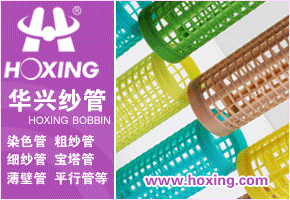H&M confirms it will meet Greenpeace demands
H&M’s decision comes after a week of Greenpeace activists in 12 countries urging the company to come clean by attaching “Detox our future!” stickers to H&M’s shop-windows, and online activists around the world calling on the brand to commit to a toxic-free future.
The move comes after the global pressure group secured the collaboration of Nike, Adidas and Puma in a major commitment to 'zero discharge' of toxic synthetic chemicals by 2020.
“H&M must now use its size and influence to lead the entire fashion industry towards a toxic-free future, by working with other committed brands to bring about cross-industry and systemic change,” Marietta Harjono, Toxic Campaigner at Greenpeace. “Other big brands who have yet to commit to zero discharge of hazardous chemicals risk losing the trust of their customers, and future business opportunities in key markets such as China, if they continue their polluting practices,” she added.
The “Detox” campaign began when Greenpeace investigations revealed links between major fashion brands, including H&M, and factories that were found to be discharging a range of hazardous chemicals into rivers in China. Further research also revealed that branded clothing from 14 international companies, including H&M, contained nonylphenol ethoxylates (NPEs) that break down into the toxic, persistent and hormone disrupting nonylphenol (NP).
As part of its commitment, H&M has agreed to address the principle of the "right to know" by ensuring public disclosure of all chemicals being released from its suppliers' factories, releasing the first data by the end of 2012.
H&M is one of the world's largest clothing retailers and its decision to sign up to the Greenpeace demands is a response to direct action from the pressure group. Some industry insiders have already voiced concerns that Greenpeace has chosen to highlight the wrong companies and that changing the way the most responsible retailers and brands work in China will only scratch the surface of a much bigger global problem.
Others suggest that the global textile sector, which is already undertaking steps towards a more sustainable way of working through the Apparel Coalition, should not be directed by a non-specialist pressure group.
It will be interesting to see if now that Greenpeace has the collaboration of these industry leading companies, it will modify its campaign of direct action against those that have agreed to its proposals.
It also remains to be seen what happens if Greenpeace deems that progress towards zero discharge is not progressing fast enough?







